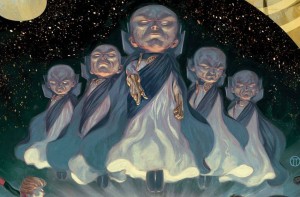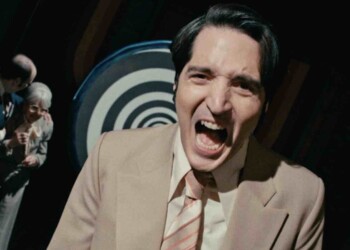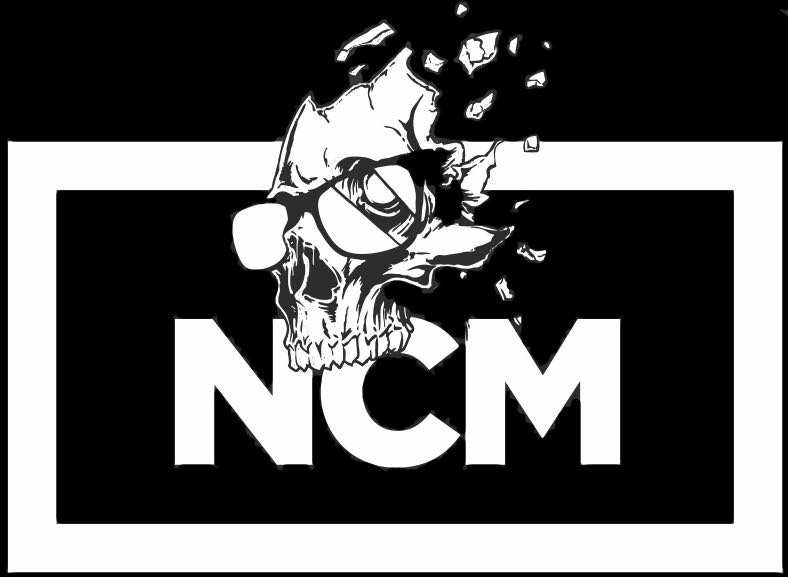I feel comic book writers and comic industry higher-ups place a greater credence on event books than their long term readers do. These events are marketed with fervor. They promise changes to the status quo. They promise that this series, this time will be the one that changes everything. They say those other events were nothing but preludes or impudent teasers and that this, THIS is the Ragnarok you have been waiting for.
The event comes. A hero dies or puts on a different mask. Maybe an origin is retconed or a long absent character returns from the dead or steps out of a cloning pod. No matter what long term shakeup an event champions, it ultimately feels flaccid. The comic book veteran knows that no matter how explosive an event may seem, it is just a small deviation of a straight line. We try to enjoy the shakeup. We encourage ourselves to be shocked, but there is this lack of impact in the grand moments because we know anything massive is fleeting. Steve Rogers may put down the shield but we all know he will be back for it in time.
The “Big Two” comic universes are anomalies of fiction; telling stories never allowed to end, yet being asked to tell paced and rewarding stories. It is like a Danish with seventy years worth of people sticking their figures in it and we all still eat it. It is often still delicious but it’s always filled with the same cheese.
Original Sin’s entrance into the industry did little to stir me from this line of thinking. I had been let down by events like Avengers VS X-men and Fear Itself. I had enjoyed the ride of Infinity, but was left with the full, yet unsatisfied feeling of eating too much popcorn. So what would writer Jason Aaron do to make his event any more potent and substantial?
The series started by presenting a narrative with an intimate scale. A murder mystery. Someone has killed The Watcher and taken his eyes. Different duos of the Avengers set out at the behest of an unnamed puppet master to find the killer.
The setup is intriguing, but as the series moved into its middle issues it began to suffer from some of the worst tropes of event books, the most blatant of which was the use of last page cliffhangers to display shocking, universe redefining moments that are explained away or neutered in the very beginning of the next issue.
As the story progressed, the focus of the narrative changed from finding out who shot The Watcher to explaining the story behind the real Nick Fury. An octogenarian who has secretly protected the earth for the last several generations – the Nick Fury we have always known – has never been more than one of his army of Life Model Decoys.
This revelation is enjoyable and impactful, but the twist is stretched over four issues and the murder mystery grinds to a halt.
Coming into Original Sin’s final issue, I felt a cocktail of hope and trepidation. There was so much potential, but the wobbly pacing was deafening the tale’s pop. The story of the real Nick Fury and his impending passing had real implication for the marvel collective.
This had, all of a sudden, become the event I had always wanted. Rather than use a twist that effected a temporary change to the future of Marvel, Aaron gave its past a new context without making it feel like a retcon.
The Nick Fury we always knew was not who we thought he was and he was not after what we thought he was after. It’s a welcome change to how a writer can approach event books. Rather than make changes to the norm that will just be undone, why not put new fingerprints on the past. This makes Original Sin feel heavier than other event stories.
Original Sin #8 answers the question that has propelled us forward: Who killed The Watcher? Who will replace Nick Fury as covert protector of Earth? What will become of the newly revealed true Nick Fury?
The answer to the question of who killed The Watcher ultimately is unsatisfying and predictable. Considering that it was the main force that began this story this seems damning, but really it ends up being unimportant.
Nick Fury’s feeling of ownership over Earth and his desire to see his stewardship passed on is where the heart of the story lies. Nick Fury condemned himself to save Earth so many times. He became a murderer, he lied to, and in some cases, destroyed his best friends, and now he is asking one of the Marvel heroes to do the same thing.
The climax of the book is tainted by Nick defending the way he spent his life when other heroes challenge him. It’s almost like he is trying to convince himself that it was all worth it. There is a feeling that he wants a recognition for his sacrifice – some small reassurance that his sins weren’t wasted.
There is such a sadness that accompanies watching him ride into battle one last time, alone, ready to finish his war.
Original Sin was, at times, a labored representation of all the worst parts of event books. At other times it felt like a forerunner for what an event book could become. Its final issue is its best and Aaron’s telling of the last Nick Fury story feels like one of the more invaluable character arches we have seen in a while.
The impact of Original Sin may fade away like so many other event books, but Aaron has made sure other writers will have to scrub hard to get his finger prints off of Marvel history.







